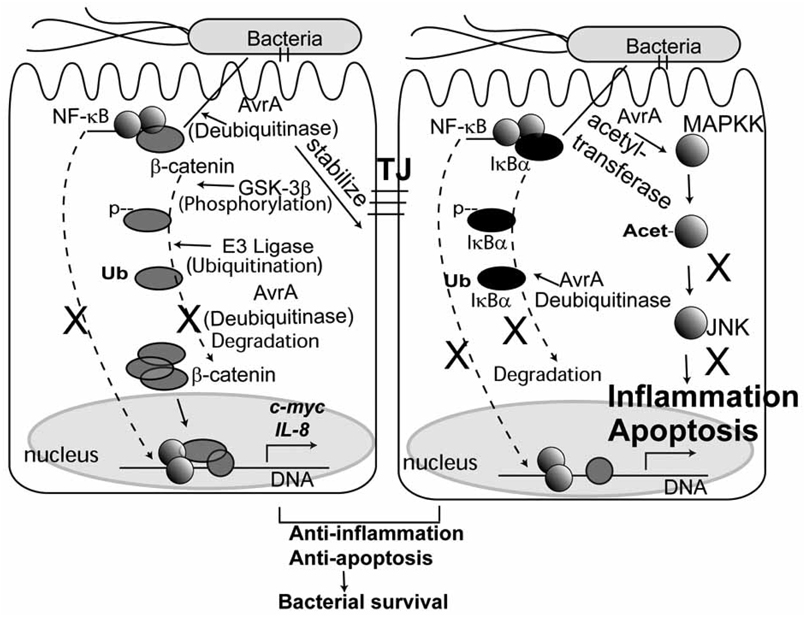Fig. (1). Schematic model for the anti-inflammatory function of Salmonella effector AvrA in the intestinal epithelial cells.
There is a cross-talk between β-catenin and NF-κB pathways in Salmonella-epithelial interaction. AvrA inhibits the NF-κB pathways. AvrA protein acts as a deubiquintinase to stabilize β-catenin and IκBα, thus inhibiting NF-κB pathways and activating the β-catenin pathway. AvrA stabilizes intestinal epithelial cell tight Junctions (TJ). AvrA also possesses acetyltransferase activity toward MAPKK and inhibits c-Jun N-terminal kinase and NF-κB signaling pathways. The role of AvrA represents a highly refined bacterial strategy that helps the bacteria survive in the host, dampens the inflammatory response, and prevents the apoptotic elimination in cells that have perceived microbial compromise. AvrA may play a role in stabilizing TJs and balancing the opposing action of other bacterial effectors.

